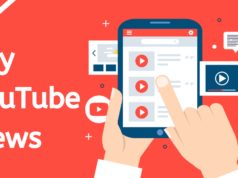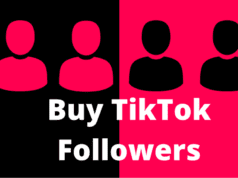
Image courtesy of Pexels.
It’s a well-known fact that personalization is an important part of your marketing strategy. We read about it and we practice it through list segmentation and using customer names to make the content feel more intimate.
And it works. In fact, 80% of consumers are more likely to purchase from a company that offers well targeted and meaningful experiences.
People want, and frankly, expect to receive personalized in this day and age. Generic and bulk email blasts no longer do the job — even if they have the customer’s name in the body copy and subject line. To really meet customer expectations, marketers need to take the customer experience and personalization to new levels.

Personalized content can improve the shopping experience for customers and improve your conversions and sales. Not only does the use of personalization increase spending, but it also creates new, loyal customers who can become brand advocates in the future. Image courtesy of Business Insider.
That leads us to the main point of this article: simple personalization is no longer enough to excite and delight your customers. Only 22% of consumers are actually satisfied with the level of personalization they receive from companies.
So how do we fix this? We’ve just spent the last several years investing in personalization to only be told it doesn’t work?
Well, no matter how you look at it personalization does work. But to really provide our customers with an engaging and satisfying multi-channel personalized experience with your brand, you need to start thinking about hyper-personalization.
Here’s a quick look ahead at the topics we’ll cover in this article:
- What the difference between personalization and hyper-personalization are
- The benefits of implementing hyper-personalization
- Three ways it can help improve your email marketing
- How to get started with hyper-personalization
Hyper-Personalization Vs. Personalization
At this point, you’re likely wondering what is hyper-personalization, and how is it different from the personalization I’m currently doing?
Traditional personalization tactics help you understand a customer on a basic level by understanding things like their name, demographics and purchasing history. From there, you create similar customers into grouped segments and send them messages that apply to these factors.
Hyper-personalization, on the other hand, utilizes technology, such as big data, machine learning, and artificial intelligence to hypercharge these traditional personalization tactics. With the help of these technologies, you have the opportunity to analyze real-time data to know what your customers want and needs are.

Hyper-personalization targets your customers as individuals rather than as segmented groups. This allows you to improve the customer experience and provide them with the exact contact that they need in their own personal buyer’s journey. Image courtesy of Shopify.
Some of the different data points you may use in hyper-personalization include:
- Consumer browsing behavior
- Previous purchasing habits
- Engagement data
- Customer lifetime value
- Coupon affinity
From there, you can begin to target customers on a one-on-one basis and actually help move them through the sales funnel. Once you’ve moved someone through the funnel, you can continue to learn more about them to build a stronger and longer relationship, leading to more engaged and loyal customers.
Benefits of Hyper-Personalization
Beyond the fact that 75% of customers said they are more likely to purchase from a company that offers them personalized services based on their preferences, hyper-personalization boasts a number of benefits.
- Make the content you are sending more likely to capture a customer’s attention and interest
- Will improve engagement by providing more relevant content at the right time
- Data-driven techniques will take the guesswork out of what content your team should focus on
- Increase sales by understanding and targeting to each person’s specific needs and pain points to help them solve their problem with your products
- Implementing it now will put you ahead of the competition

When it comes to hyper-personalization, not many companies have implemented the tactic. That means by getting on board and starting to move towards a more customer-centric experience you’ll be ahead of the curve. Image courtesy of Convince and Convert.
You should expect to see a number of benefits by taking your personalization to the next step. The great thing about using hyper-personalization is that since it is based on real-time data, you can continue to expand your knowledge base, predict future changes, and grow with your customers as their behaviors change.
How Hyper-Personalizing Can Improve Your Emails
When it comes to email marketing, you need to find a way to cut through the clutter and get your customers to open your messages. Hyper-personalization can help you predict what content your customer wants and when you should send it based on their browsing and engagement history.

Many companies are focused on improving the customer experience while gaining a better understanding of their customers. Hyper-personalization and the technology that comes with it is the perfect way to do this. Image courtesy of Convince and Convert.
This will help your emails stand out in the sea of emails customers receive every day. Here are a few different ways that implementing hyper-personalization can improve your email marketing.
Eliminates choice overload.
Choice overload is when someone has a difficult time making a decision because they are faced with too many options. In marketing, if you send a customer an email with too much information or too many calls to action, they may become overwhelmed and simply take no action at all. Hyper-personalization helps eliminate information overload by pinpointing the exact contact your customer wants to receive.

When someone is presented with too many choices, they are likely not going to make a choice at all. Keeping content consistent and relevant is the best way to get a customer to make a purchase from your content. Image courtesy of Parsec Financial.
It simplifies the shopping experience (and increases sales).
By understanding where your customers fall in the sales funnel, you can provide them with stage-specific emails to help them with their purchasing decision. Hyper-personalization provides you with the unique opportunity to send the right content at the right time — which will help increase engagement and boost sales. So rather than sending a generic email to your master list, identify who is on the verge of making a purchase and send them decision stage content to help encourage them to checkout.
Continuous learning and improvement.
Using a data-driven, real-time approach will keep your customer personalization relevant. It will allow you to continuously learn about your customers and shift your targeting based on their behavioral and purchasing changes. This means you can stay on top of their changing needs and always know what emails they want to see and when it’s time to send something new.
There are numerous benefits when it comes to hyper-personalization. The better you understand your customers on a personal level, the better the engagement and metrics you’ll expect to see.
How to Get Started With Hyper-Personalization
Chances are good you’re already on the right track to get started with hyper-personalization. The process is very similar to implementing traditional personalization, but you have to upgrade your data collection and processing.

The more data you can process, the better you can know your customers and provide them with the unique experience they are looking for. Understanding everything from their interests, most influential media sources to how much time they spend in-store and how they use coupons and discounts will let you improve their experience. Image courtesy of Wipro.
Since data is the main differentiator of the two personalization tactics, it should be your main focus when moving to hyper-personalization. Having the right data and the ability to process and analyze large amounts of complex data, you’ll be ready to start reading the minds of your customers (well, sort of).
These are a few steps you’ll want to take when getting ready to move to a hyper-personalized way of marketing.
- Data, data, data. We’ve probably beat this one into the ground at this point, but without detailed data, you won’t be able to provide your customers with a hyper-personalized experience. There are many programs and applications available to help you analyze data and identify opportunities to further personalize the customer experience.
- Know your customer’s journey. Marketing to your customers at the stages in which they are currently in will help improve their experience while leading them towards a purchase. Having the right personalization tactics in place is the closest thing you can get to reading their minds. You can predict and identify exactly what they need next and provide it to them before they even knew they needed it.
The Future of Hyper-Personalization
Hyper-personalization is a new trend that is here to stay. As technology such as machine learning and artificial intelligence continue to improve, so will the need for more specific personalization in marketing. Just as a customer expect personalized content now, in the near future, they will begin to expect companies to know exactly what they need, when they need it.
Now’s the time to get ahead of the competition and start thinking about how you can use hyper-personalization to improve your customer experience.








